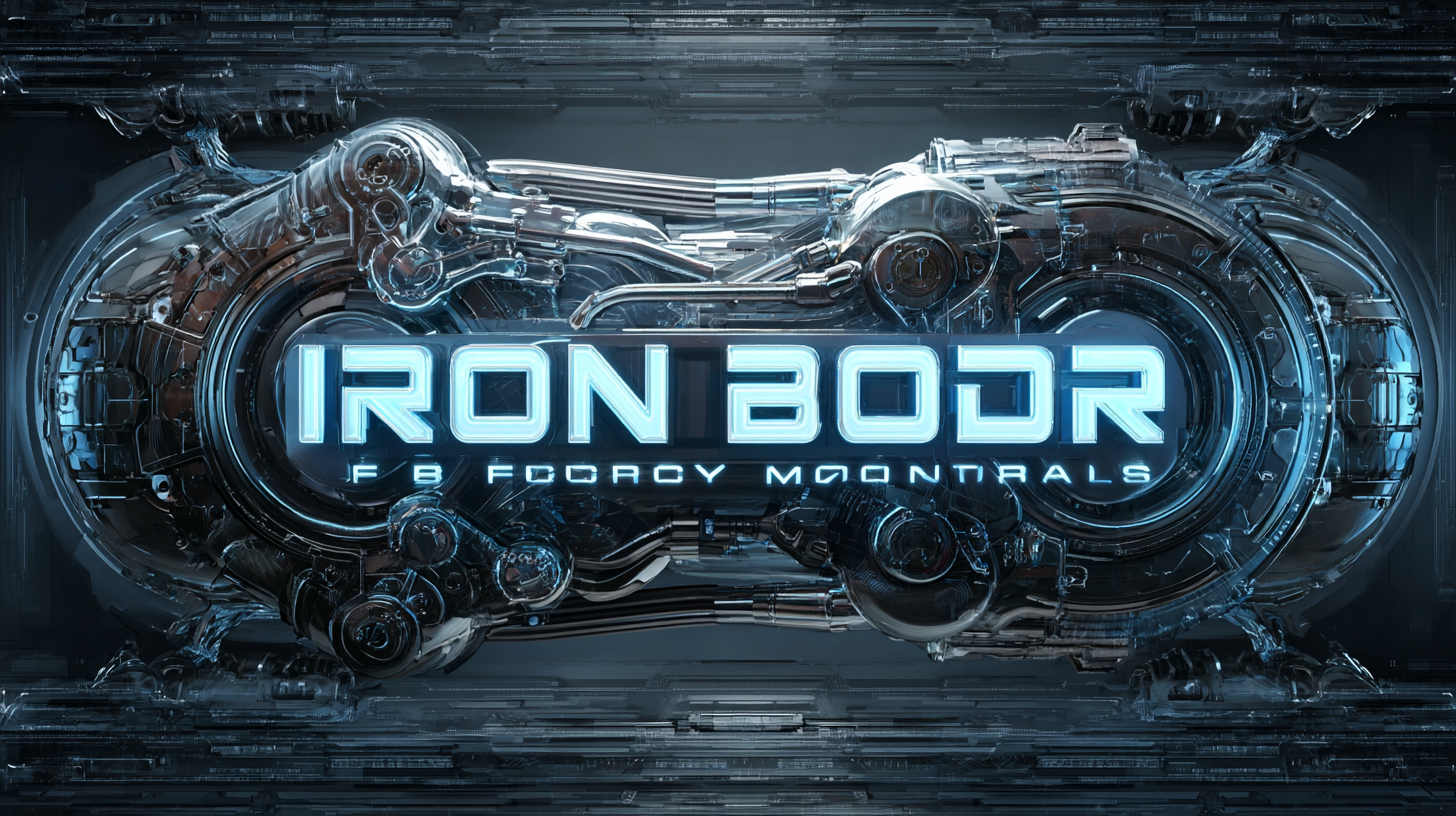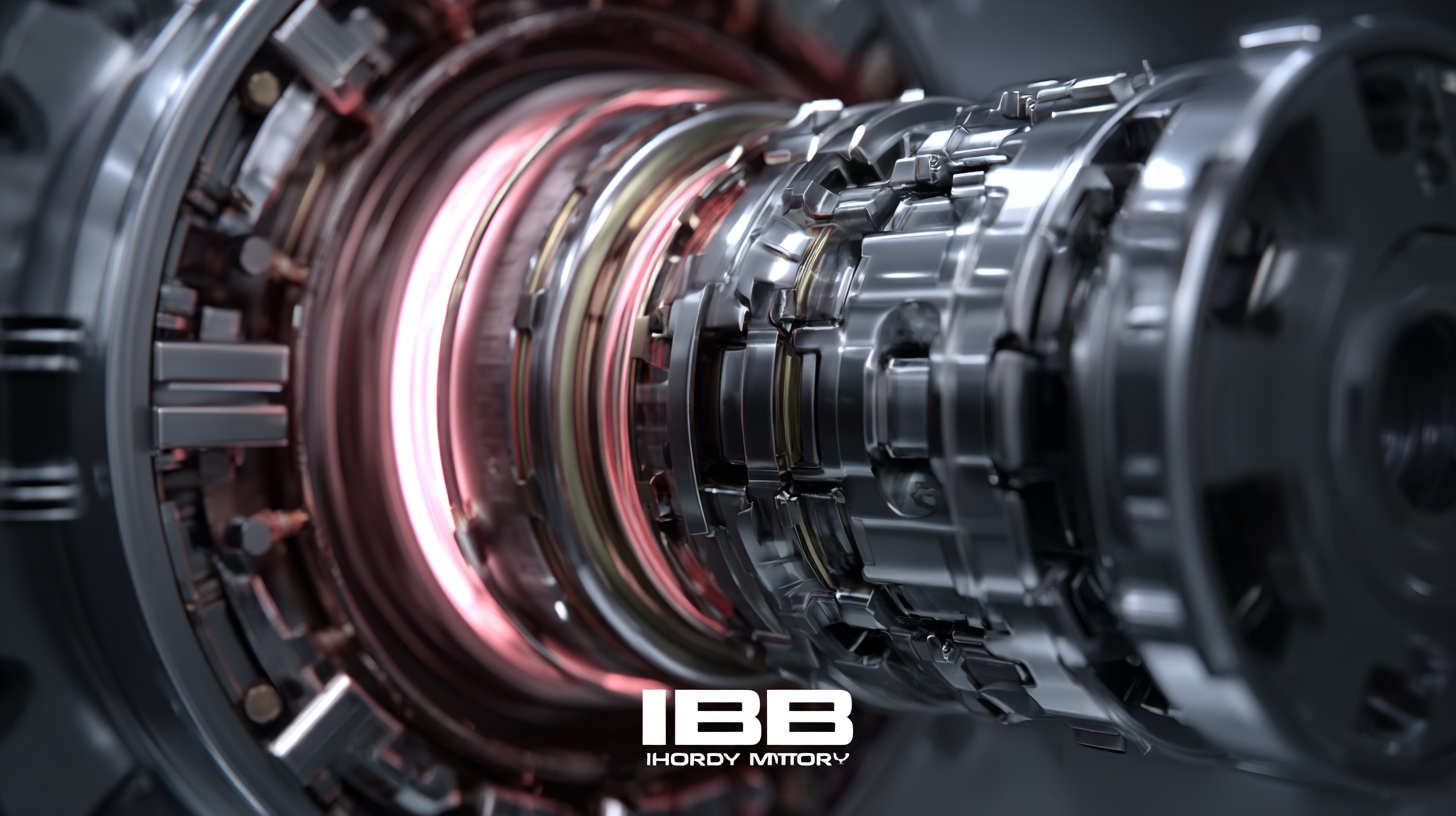
Future of Manufacturing: A Comprehensive Guide to Best Iron Body Motors in 2025 Trends
In the rapidly evolving landscape of manufacturing, the year 2025 is poised to usher in groundbreaking advancements, particularly with the emergence of Iron Body Motors. As per a recent industry report by MarketsandMarkets, the global electric motors market is projected to reach $205.8 billion by 2025, driven by increasing energy efficiency mandates and the growing adoption of automation across various sectors.

Iron Body Motors, renowned for their durability and efficiency, are becoming essential components in this transformation, offering enhanced performance and reduced maintenance costs compared to traditional motor designs. As manufacturers strive to integrate cutting-edge technology and sustainable practices, understanding the best Iron Body Motors will be crucial for staying competitive.
This comprehensive guide will illuminate the trends shaping the future of manufacturing and highlight the most promising Iron Body Motor options on the market.
Emerging Trends in Iron Body Motor Manufacturing for 2025
As the landscape of manufacturing continues to evolve, the trend towards iron body motors emerges as a pivotal shift for 2025. With several automotive giants venturing into the realm of humanoid robotics, the fusion of advanced manufacturing techniques and robotics is set to redefine production processes. Iron body motors are not only gaining popularity for their durability and efficiency but also for their potential integration with smart technologies that enhance operational performance.
**Tips for Adoption:**
When considering iron body motors for your manufacturing needs, it is essential to assess the long-term benefits against initial investment costs. Look for motors with enhanced temperature resistance and lower maintenance requirements, which will contribute to a more sustainable manufacturing environment. Additionally, staying informed about the latest advancements in robotics can provide insights on how to best implement these technologies effectively.
Moreover, collaborating with technology firms can facilitate innovation. Engaging in partnerships with companies specializing in robotic integration can optimize the use of iron body motors, tracking performance metrics to continuously enhance productivity and efficiency. As we approach 2025, integrating these practices will not only boost manufacturing capabilities but also align with emerging trends in automation and sustainable development.
Technological Innovations Shaping the Future of Iron Body Motors
The landscape of manufacturing is rapidly evolving, particularly within the sector of iron body motors. As we look ahead to 2025, several technological innovations are set to redefine industry standards. A recent report by MarketsandMarkets predicts that the global electric motor market, which includes iron body motors, will reach $210 billion by 2025, growing at a CAGR of 6.5%. This growth is largely attributed to advancements in materials and smart technology integrations, which enhance efficiency and reduce operational costs.
Among prominent trends, the development of lightweight, high-strength alloys is crucial. These new materials not only improve motor performance but also extend their lifespan, a major factor driving adoption in industries ranging from automotive to renewable energy. Additionally, the introduction of IoT-enabled iron body motors allows for real-time monitoring and predictive maintenance, reducing downtime and maximizing productivity. According to a report from Gartner, the implementation of IoT in manufacturing could result in a 30% increase in operational efficiency by 2025. Thus, the convergence of advanced materials, smart technology, and digital connectivity is fundamentally shaping the future of manufacturing iron body motors.

Sustainability Practices in Iron Body Motor Production
Sustainability is becoming a cornerstone in the production of iron body motors, driven by increasing regulatory pressures and consumer demand for eco-friendly products. According to a report by Grand View Research, the global electric motor market is expected to reach $169.4 billion by 2028, with a notable push toward sustainable manufacturing practices. Manufacturers are now focusing on reducing energy consumption and raw material waste, implementing cleaner production techniques that significantly lower their carbon footprints.

One effective approach being adopted is the use of recycled materials in the production of iron body motors. A study by the International Energy Agency (IEA) highlights that utilizing recycled iron can reduce energy usage by up to 75% compared to using virgin materials. Additionally, advancements in technology have allowed for the development of more efficient motors that not only consume less energy during operation but also require less energy in the manufacturing phase.
As we move toward 2025, the integration of these sustainable practices will not only transform the iron body motor landscape but also contribute to the larger goal of achieving net-zero emissions across the manufacturing sector.
Global Market Dynamics: China’s Role in Iron Body Motor Supply
China has solidified its position as a dominant player in the global iron body motor supply chain. As manufacturers across various sectors gear up for the advancements anticipated in 2025, the role of Chinese producers becomes increasingly critical. The country benefits from a robust industrial ecosystem, which includes vast resources, a skilled workforce, and significant investments in technology. This enhances the production capabilities of iron body motors, enabling manufacturers to meet the growing demands of electric vehicles, industrial automation, and renewable energy sectors.
The dynamics of the global market indicate a shift towards sustainability and energy efficiency, driving the innovations in iron body motors. Chinese companies are not only exporting vast quantities of these motors but are also leading in the development of high-performance solutions that comply with international standards. As the world leans more heavily on clean technologies, China’s ability to produce cost-effective and high-quality iron body motors will be a key factor in shaping the landscape of manufacturing in the years to come. The synergy between local manufacturers and international partnerships further positions China as a pivotal hub in the evolving manufacturing sector.
Key Players and Competitive Landscape in the Iron Body Motor Industry
The iron body motor industry is rapidly evolving, with several key players leading the charge in innovation and technology. Companies like Siemens, ABB, and Nidec are at the forefront, investing heavily in research and development to enhance motor performance and durability. The competitive landscape is marked by a focus on energy efficiency and sustainability, as manufacturers strive to meet the growing demand for eco-friendly solutions. Collaboration among industry leaders and startups alike is fostering a robust marketplace that emphasizes continuous improvement and customer satisfaction.
When considering a purchase in this competitive sector, it’s crucial to evaluate the specific needs of your applications. **Tip:** Look for motors with high efficiency ratings and a track record of reliability to ensure long-term performance. Additionally, assess the support services offered by manufacturers, as timely maintenance and expert advice can significantly influence operational success.
As technology advances, the integration of smart features into iron body motors is becoming commonplace. **Tip:** Opt for models equipped with IoT capabilities, allowing for real-time monitoring and diagnostics. This can lead to proactive maintenance, reducing downtime and enhancing productivity in manufacturing processes. Keeping an eye on these trends will be essential for businesses looking to capitalize on the future of manufacturing.
Future of Manufacturing: Best Iron Body Motors Trends in 2025
-

Phone
Phone

0086-13586199782
-

E-mail
-

Whatsapp
-

Wechat
Wechat

-

Top
